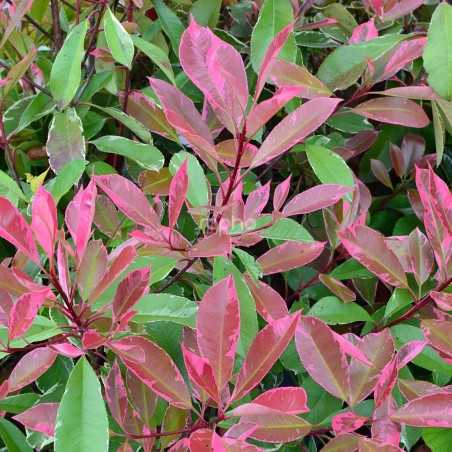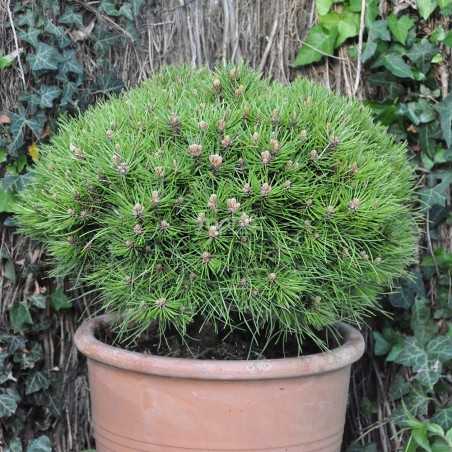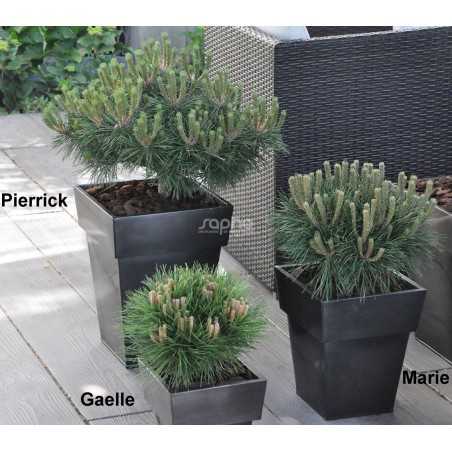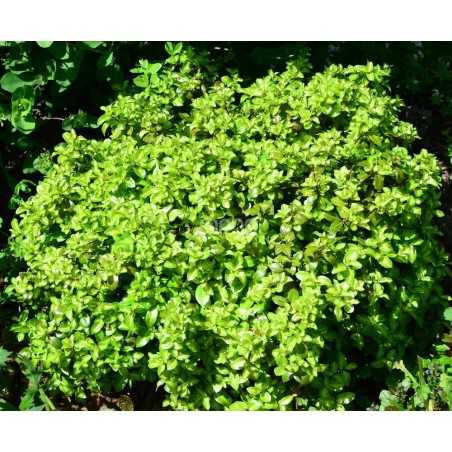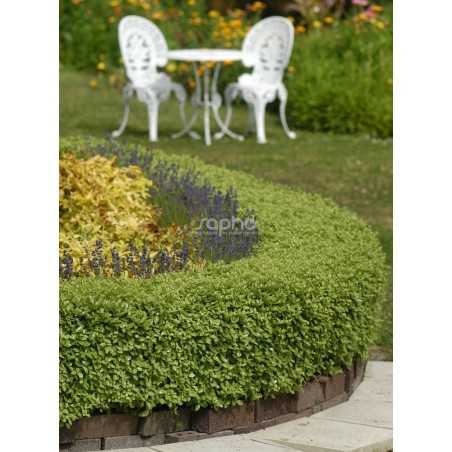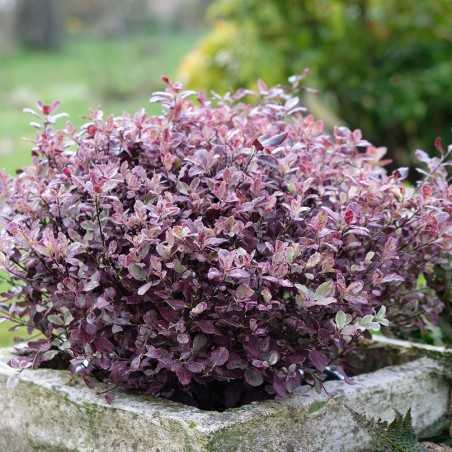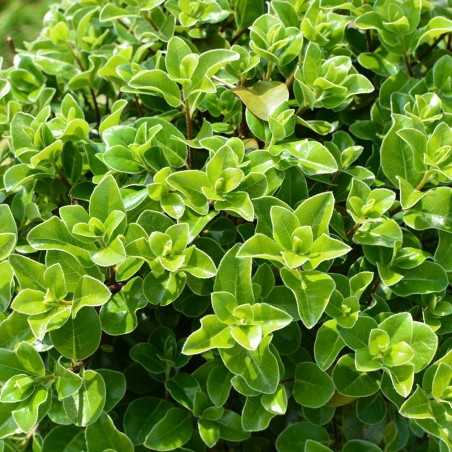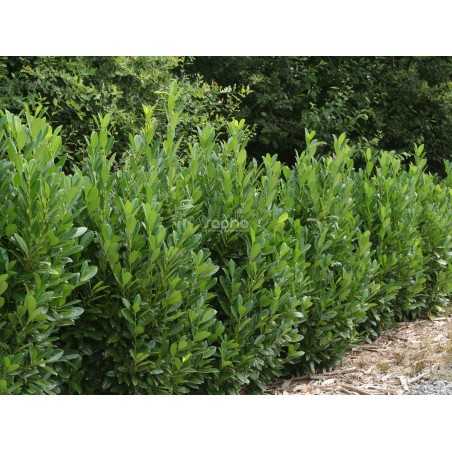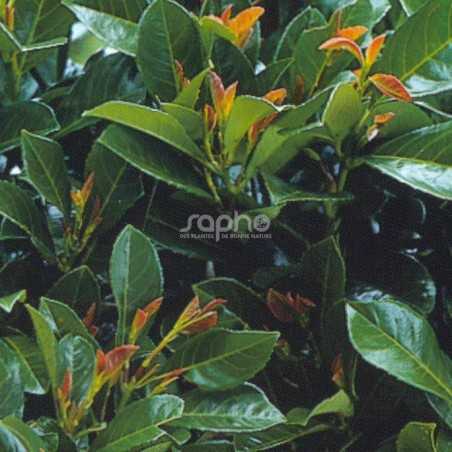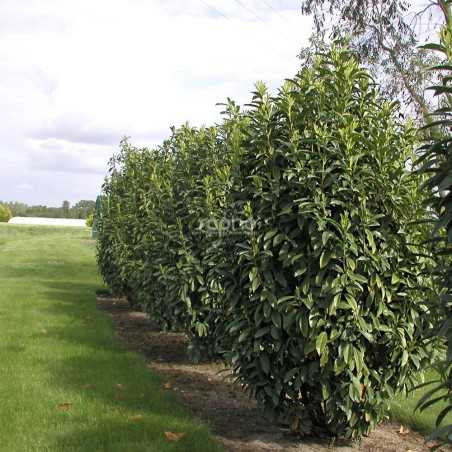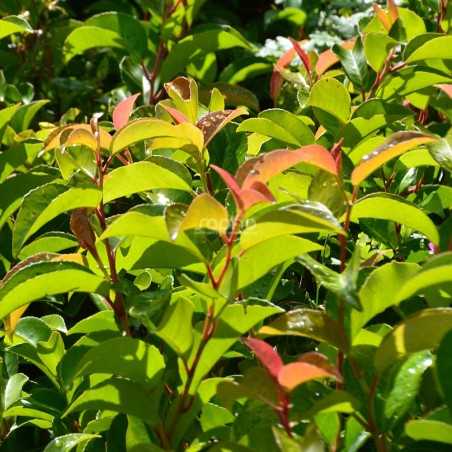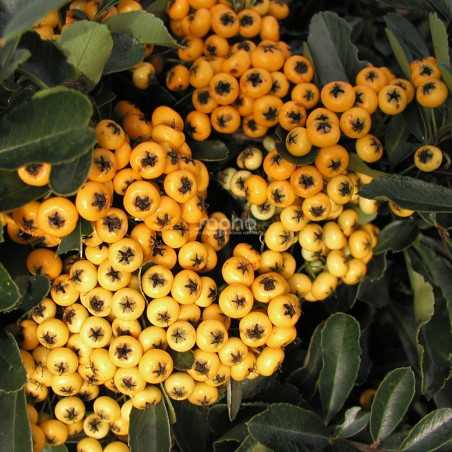Beautifully mixed colours and an upright and regular formIts variegated foliage brings colour throughout the year. Photinia Louise has also been selected for its vigorous, erect growth and its ample vegetation that's regular, compact and dense. Photinia Louise is a shrub with persistent leaves and changing colours. In spring and autumn the young shoots are bright red spotted with pink.The developing leaves become thick and green, spotted wih creamy white. Its flowers, in May, are quite discreet, forming creamy white umbels. Upkeep is easy as it needs little pruning other than that required by the garden. In a hedge, a mixed bed or as a solitary shrub, 2 to 3 m high, Photinia Louise will enliven a garden throughout the year.
Filter By
Foliage
Position
Categories
Menu
All our varieties
A beautiful regular ball of 0,80 m high (fully grown).
Growth rate is 5 - 9 cm per year, slower than 'Pierrick Bregeon'.
Forms a compact dense mound.
Light green needles of up to 10 cm, can naturally and slightly turn yellow in winter. Spiraling needles at maturity. Viability of the needles: 3 to 4 years.
Small grey buds with a pointy tip
No resin production.
Like all the other varieties of the pine range, registered by H. BREGEON, its reduced growth allows this pine to be grown in pots, on terraces and on balconies, as well as in small modern gardens.
Bambino®, the smallest of the range.
The smallest variety (0.50 m fully grown) and of slowest growth rate.
The dark green needles stay on for 2 to 3 years.
Pointed buds.
Very slight resin production.
Like all the other varieties of the pine range, registered by H. BREGEON, its reduced growth allows this pine to be grown in pots, on terraces and on balconies, as well as in small modern gardens.
A golden ball for low hedges or in isolationThe variety 'Golden Ball' has very brilliant golden foliage. In its period of growth, its young golden-yellow leaves contrast with the older yellow-green leaves edged with a stronger green.Coming from the same breeding than Pittosporum tenuifolium 'Golf Ball', 'Golden Ball' has the same qualities: very dense, it naturally forms a ball of less than one meter. Fast-growing and branching from the base, it can be pruned. 'Golden Ball' is ideal for small spaces and low hedges as well as in pots and for topiary.As it is resistant to drought, wind and seaspray, it provides an alternative to box in temperate and Mediterranean areas. In May and June its small discreet violet-coloured flowers smell of honey.
Recommended for its low, naturally ball shaped growthThis cultivar originates from New Zealand.?Golf Ball? has a very round shape, not more than 1 m in dimension. It grows rapidly and stands out by its dense branches from the base upwards.Its evergreen foliage is light green.Discrete violet-brown flowers appear in Mai and June. The have a scent of honey but are of no decorative interest. 'Golf Ball' resists rather well to drought, and to temperatures of -5 to -10° C. It is excellent for the sea side because it accepts mist and wind.Recommended for small areas and low hedges, it is also suitable for pots and as topiary, like box.
Fantastic foliage in perpetual evolution
The Bannow Bay variety is a natural mutation of the Pittosporum Tom Thumb.
Its very dense foliage has evolving colors: olive green edged with white in spring, then splashed with pink and finishing in a beautiful shade of purple when the cold arrives.
Its natural, round clump growth requires little or no pruning.
This shrub adapts perfectly to mild climates, in the garden or in pots on a balcony or terrace.
Dense and upright, ideal for hedges and topiaries
Irish Luck pittosporum is a dense-growing variety with strong branches and magnificent glossy green foliage contrasting with its dark stems.
Steady-growing, resistant to pests, salt and cold, it is very easy to care for.
It is ideal for planting in the ground, as a hedge, topiary or pot on a terrace or balcony.
A hardy selection with well-branched growth, for a maintenance-free hedge.This variety, coming from a Prunus laurocerasus 'Otto Luyken' seedling, was selected for its rapid growth and its well branched and upright habit, resembling a compact flame.It has few flowers in spring, and therefore only a little fruit afterwards.Rustic evergreen, particularly resistant to disease, not needing pruning, 'Greentorch' is an ideal variety for a monospecific hedge without worries.
Little springtime vulcanos for a low hedge.This variety of laurel with elegant branches naturally reaches a height of about 2 m and a spread of 1.50 m, all the while keeping its compact shape. It is of medium to slow growth.The coppery young shoots are decorative and contrast well with the shiny dark green foliage, which is evergreen.The creamy white flowers in May are followed by deep violet berries.ETNA® tolerates pruning and is recommended for the composition of moderate sized hedges (up to 0.80 m). Mixed with other shrubs, it brings an evergreen touch to beds. It can also be used in containers.Trophies: Gold medal at the Plantarium 1994. (Boskoop - NETHERLANDS)
For a naturally narrow and hardy hedge.This Prunus laurocerasus has been cultivated in Switzerland for its erect and narrow growth. It only needs light pruning.It reaches a height of 3,50 m and a width of 1.00 m when free growing.The foliage is shiny dark green, quite elongated and resists well to low temperatures.GENOLIA® does not thin out at the base and can stand the weight of snow thanks to its erect and strong branches.It has discrete flowers and the fruits are not very abundant.This variety is ideal for a narrow hedge.Trophies: Silver Medal at PLANTARIUM 2005 (Boskoop - NETHERLANDS)
Worth a try: a new evergreenThis new evergreen is an asset for the producer: its growth is vigorous and it forms very well. The young shoots offer a pretty bronze shimmer, later the foliage turns bright light green, which contrasts with the red petioles. In the autumn it turns bronze green.The slightly flared and drooping shape as well as the small and curled leaves give the shrub a light and natural silhouette.Very hardy for a Prunus azorica. Ideal for the revival of hedges!
Yellow fruits for this resistant Pyracantha of the SAPHYR® range.This cultivation has all the characteristics of the SAPHYR® range.SAPHYR® Jaune 'Cadaune', very vigorous, bears, from Mid-October, numerous yellow berries, which last a long time, later turning to yellow-orange.

